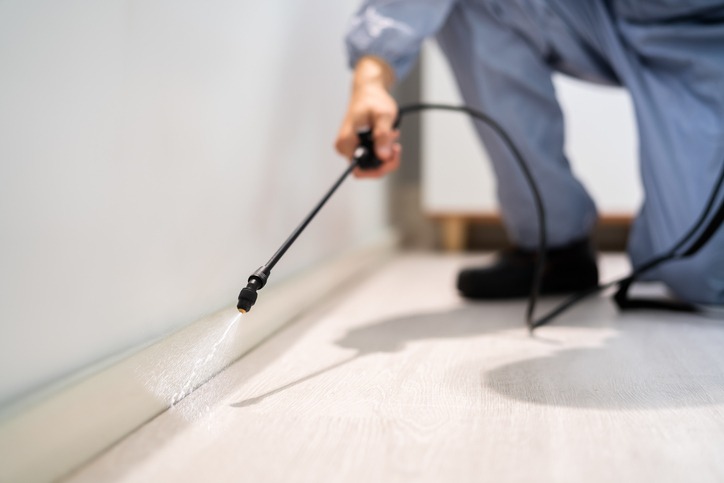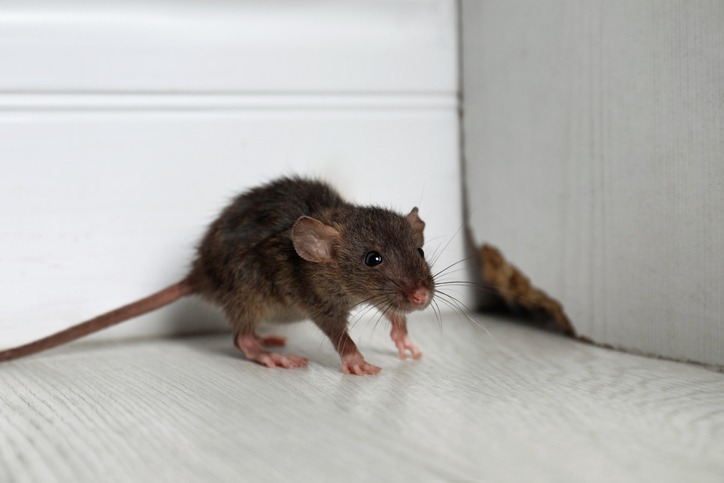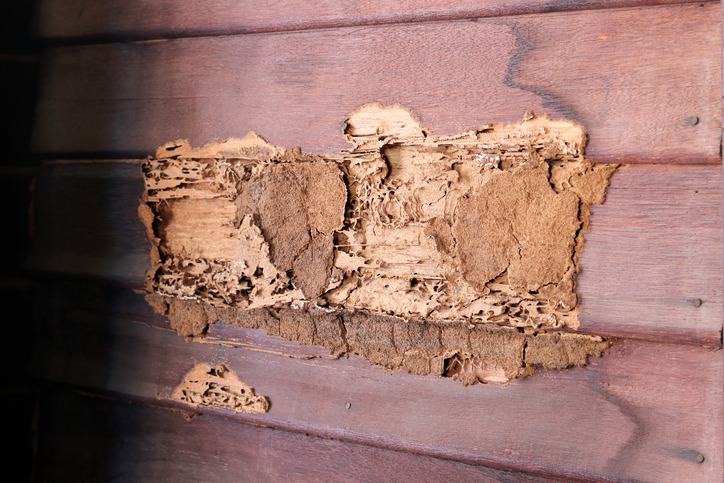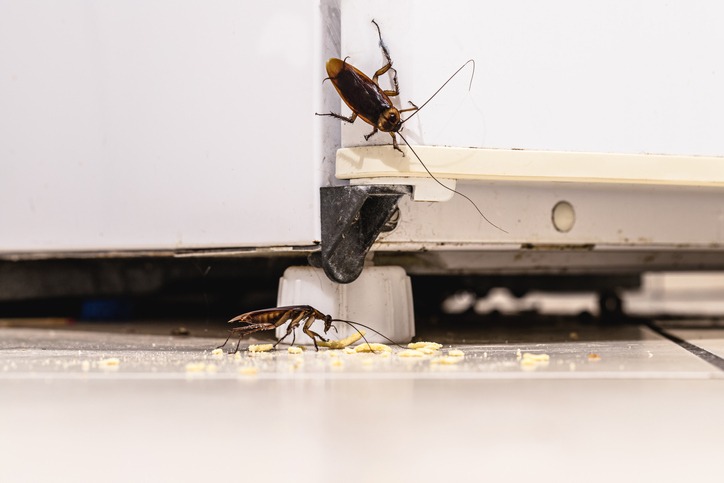Household pests are an unwelcome nuisance that can pose significant health risks and cause property damage if left unchecked. As homeowners or renters, it’s crucial to recognize the signs of infestation and understand how to respond effectively. This article serves as a comprehensive guide to identifying common pests, implementing preventive measures, and exploring targeted treatments. Whether you’re dealing with a minor annoyance or a full-blown infestation, the following sections will equip you with the knowledge to protect your home and maintain a pest-free environment. With a focus on practical advice and expert insights, we’ll navigate the challenges of pest control together, ensuring that you can confidently tackle any critter that crosses your threshold.
Recognizing and Identifying Common Household Pests
The initial step in managing a pest problem is to accurately identify the intruders in your home. Each type of pest demands a tailored approach to effectively address the issue, underscoring the importance of proper identification.
Ants are commonly spotted in areas like kitchens and bathrooms, recognizable by their consistent size and tendency to move in groups, often along defined trails. Their coloration varies from light brown to deep black.
Cockroaches, known for their flat, oval bodies and swift movements, are nocturnal creatures that thrive in warm, moist environments. Their long antennae are a telltale sign, and seeing them during daylight hours can indicate a larger infestation.
Rodents include mice and rats, distinguished by their ever-growing sharp incisors. Telltale signs of a rodent presence include droppings, distinctive gnaw marks, and greasy marks on walls where they travel.
Bed Bugs are tiny, reddish-brown parasites that feast on human blood, often hiding in mattresses, bed frames, and nearby furniture. They can be identified by their flattened bodies and the small blood spots they leave behind on bedding.
Termites are often mistaken for ants but can be distinguished by their thicker waistlines, straight antennae, and wings of equal size. These silent destroyers are more frequently detected by the damage they inflict on wooden structures than by their physical appearance.
Understanding the unique behaviors and preferred habitats of these pests is crucial for selecting the appropriate treatment methods, which we will explore in the subsequent sections of this article.
Ants, Cockroaches, and Rodents
When confronting invasions of ants, cockroaches, and rodents, a multifaceted strategy is essential: accurate pest identification, comprehension of their habits, and precise control methods.
Ants are adept at establishing colonies in concealed areas such as inside walls or beneath floors, and even outdoors in the soil. The complexity and size of ant colonies make them formidable opponents. They are drawn to sugars and proteins, making even the smallest food spill a potential feast for these insects.
Cockroaches boast an impressive resilience, able to subsist on a diverse array of food sources, including non-food items. They pose a risk of triggering allergies and asthma, particularly in young children. The presence of cockroaches during daylight can often signal a much larger hidden problem.
Rodents are incredibly versatile, capable of squeezing through tiny openings comparable to the size of a dime. They not only cause structural damage by gnawing on various materials but also pose health risks by carrying diseases such as hantavirus and salmonellosis.
Effective treatments for these pests include:
- Strategically placed bait stations and traps to lure and capture or eliminate ants and rodents.
- Insecticidal treatments targeting the nooks and crannies where cockroaches hide.
- Insect growth regulators that disrupt the reproductive cycle of these pests.
- Gel baits for ants and cockroaches, which are particularly effective when transported back to the nest and shared among the colony members.
Complementing these targeted treatments with preventive actions, such as maintaining a clean environment and securely storing food, is crucial. Identifying and sealing potential entry points and addressing specific attractants for each pest, like moisture for ants, are also key steps in a comprehensive pest management plan.
A tailored approach, often integrating multiple control methods and ongoing monitoring, is necessary to achieve and maintain a pest-free home. Persistence and attention to detail are the cornerstones of successful pest management.
Bed Bugs and Termites
Tackling the stealthy nature of bed bugs and termites is paramount, as they can be both evasive and destructive.
Bed bugs, tiny nocturnal parasites, have a penchant for human blood and often take refuge in the sanctuary of mattresses, furniture, and other snug spaces near sleeping areas. Their bites may cause discomfort and allergic responses. These pests are particularly challenging to eliminate due to their ability to endure extended periods without sustenance and their skill at remaining concealed. Bed bugs often hitch rides into homes via travel or through the acquisition of second-hand furnishings.
Termites, especially the subterranean and drywood varieties, pose a grave threat to the structural integrity of buildings through their relentless wood consumption. These insects are masters of evasion, often causing extensive damage before they are even detected. Subterranean termites construct distinctive mud tubes for travel and are usually found in moist soil near wooden structures. Conversely, drywood termites are known to directly infest and thrive in dry wooden elements of homes.
To address these pests, consider the following targeted treatments:
- Employing high heat, such as steam treatments, alongside thorough vacuuming and the application of insecticides designated for bed bugs can be effective. Mattress and box spring encasements also serve as a preventative measure, trapping any existing bed bugs and preventing new ones from taking hold.
- Termite management often involves monitoring and bait systems, which are installed around a property to detect activity. When termites are confirmed, toxic baits are introduced to eradicate the colony.
- In severe cases, fumigating the entire structure may be the only viable solution for both bed bugs and termites.
- Subterranean termites may be combated with liquid termiticides, creating a protective barrier around and beneath a building. For drywood termites, localized treatment methods, such as injecting termiticides directly into their tunnels, are often employed.
Given the elusive and complex behaviors of bed bugs and termites, enlisting professional services is frequently necessary to ensure thorough extermination. Treatment plans are typically comprehensive, involving several visits and inspections to confirm the complete removal of the infestation.
Implementing Preventive Measures Against Pests
Proactive prevention is key to maintaining a pest-free home, serving as the first line of defense against future invasions.
Home Sealing
Fortifying your home against pests is a crucial preventative step. These unwelcome visitors can exploit even the tiniest of openings, necessitating a thorough inspection and repair of potential entry points:
- Examine and mend any gaps around doors, windows, and exterior utility entries.
- Install door sweeps and weather stripping to close off under-door spaces.
- Replace or repair any compromised window and door screens to deter flying insects.
- Address foundation and roofline cracks with suitable sealants like caulk or foam.
Cleanliness
A clean home is far less appealing to pests. To maintain an inhospitable environment for them, consider the following:
- Vacuum and dust with regularity to eliminate potential food sources and nesting materials.
- Store foodstuffs in airtight containers and refrain from leaving pet food out after dark.
- Clean any spills and crumbs promptly from all surfaces and appliances.
- Dispose of waste in bins with secure lids and keep these areas clean.
Moisture Control
Pests are often drawn to moisture, making it imperative to manage dampness within the home:
- Address any leaks from faucets, pipes, or appliances promptly.
- Promote proper ventilation in areas prone to moisture, such as bathrooms and kitchens.
- Maintain gutters and downspouts to prevent water from accumulating near your home’s foundation.
- Employ dehumidifiers in humid areas to maintain an arid environment.
Landscaping and Exterior Maintenance
The area surrounding your home can also impact pest activity:
- Trim vegetation and branches to limit pest access to your home.
- Keep your yard free of debris and store organic materials like mulch and woodpiles at a distance from your home’s perimeter.
By adopting these preventative measures, you can significantly diminish the chances of pest infestations and safeguard your home against future pest-related problems. Integrating these strategies with routine inspections can bolster your defenses, ensuring your living space remains a pest-free zone.
Home Sealing and Cleanliness
Fortifying your home against the silent creep of pests begins with a vigilant approach to sealing and maintaining a clean environment. As we’ve touched upon the significance of preventive tactics, let’s now explore the finer points of fortification and sanitation.
Begin with a detailed examination of your home’s exterior. Search for any fissures in the foundation or loose siding, scrutinize the periphery of windows and doors, and don’t overlook the entry points for utility lines. Small openings can be sealed with silicone caulk, while expanding foam is suitable for larger breaches.
Door sweeps are an excellent addition to your home’s defenses, especially at the base of exterior doors, to thwart any would-be intruders. Check that vents are securely covered, and for those larger openings, like chimneys, wire mesh can be a savior, allowing for airflow while keeping pests out.
Window and door seals should be inspected regularly; even the smallest of gaps can be an invitation to ants and spiders. Replace any worn seals promptly to maintain an impenetrable barrier.
Shifting focus to cleanliness, it’s essential to understand that pests are drawn to mess and leftovers. A routine cleaning schedule that includes sweeping, vacuuming, and wiping down surfaces after meals can significantly reduce the allure for pests.
Be astute with waste management—regularly dispose of trash and employ liners and lids to contain odors that might attract pests. When it comes to pantry storage, airtight containers are your allies, safeguarding your food from the clutches of moths, beetles, and rodents.
Lastly, reduce clutter to minimize hiding spots for pests. Regularly sort through and eliminate piles of paper, fabric, and other materials that could become a haven for cockroaches and silverfish. For more information on silverfish, head over to our article, What Causes Silverfish Bugs On The Bed?
By integrating these sealing and cleaning practices into your routine, you lay a robust foundation for a home that stands resilient against pest invasions.
Moisture Control
The battle against pests extends into the realm of moisture management. Many pests, including the likes of cockroaches, silverfish, and termites, are drawn to humid conditions, making moisture control a pivotal aspect of pest prevention.
Be proactive in leak detection. Regularly inspect plumbing fixtures and appliances for any signs of moisture and address repairs without delay. Keeping indoor humidity in check is also crucial—employ dehumidifiers to maintain optimal levels, particularly in basements, attics, and crawlspaces.
Ventilation plays a key role in moisture reduction. Utilize exhaust fans or open windows to disperse steam and condensation in kitchens and bathrooms, especially during and after use.
Landscaping should not be overlooked. Ensure the soil around your home slopes outward to prevent water from pooling at the foundation—a potential pest magnet. Gutters and downspouts require attention too; clean them out to prevent clogs that could lead to water damage and pest attraction.
When it comes to irrigation, moderation is key. Water should be directed away from the house to avoid unwanted seepage into the foundation or basement areas.
Lastly, insulating pipes can prevent the formation of condensation, which, if left unchecked, can create damp spots that are perfect for pests seeking moisture.
By implementing these moisture control measures, you can significantly diminish the likelihood of a pest infestation, keeping your home dry and less hospitable to those unwelcome critters.
Effective Pest Treatment Strategies
Embarking on the journey to a pest-free home, we now pivot from proactive deterrence to decisive elimination. Each pest demands a nuanced approach to treatment, and here we delve into the specifics:
For ants, bait stations are a game-changer. These devices entice ants with an irresistible concoction, which they then transport to their nest, inadvertently delivering a lethal dose to their colony. Cockroach invasions, on the other hand, necessitate a multifaceted battle plan. A blend of gel baits, insect growth regulators to stifle their reproduction, and traps to capture these elusive pests can be highly effective. In extreme scenarios, it might be prudent to enlist professional-grade pesticide treatments.
Rodent infestations can be addressed with a variety of traps and baits, but it’s critical to prioritize safety, particularly in households with young children or pets. Complementing these efforts, exclusion tactics—sealing off entry points and reducing outdoor nesting opportunities—are key to ensuring rodents don’t make a comeback.
When it comes to bed bugs, a meticulous cleaning regime is the first line of defense, followed by heat treatments and insecticide sprays. Encasing mattresses can also serve as a formidable barrier against these persistent intruders.
Termites present a unique challenge due to their capacity for structural havoc. Professional intervention is often the most reliable course of action, with soil treatments, bait systems, and wood treatments at the forefront of termite warfare. Preventative strategies, such as reducing wood-to-soil contact and rectifying moisture issues, are equally crucial.
While DIY solutions may provide a temporary fix, expert pest control services are the gold standard for tackling extensive or stubborn infestations, particularly those that pose significant health risks or threaten to damage property.
Ant and Cockroach Eradication
Tackling ant and cockroach problems requires a strategic approach that targets their colonies and nesting sites.
Ants can be outsmarted with bait stations, which serve as Trojan horses, sneaking poison into the heart of the colony. Non-repellent insecticides stealthily coat the perimeters of homes, ensnaring ants that unwittingly carry the toxicant back to their nest. Granular baits cast around the home’s exterior are particularly adept at combating larger ant species. Vigilance in maintaining a clean environment—promptly addressing spills and crumbs—further diminishes the allure of your home to these industrious invaders.
Cockroaches succumb to well-placed gel baits that lure them out from their hidden enclaves. Insect growth regulators act as an Achilles’ heel, halting the maturation of juvenile roaches and breaking the cycle of reproduction. Traps serve a dual purpose: they reduce the active population and help monitor infestation levels. For long-lasting control, dust formulations with diatomaceous earth or boric acid can be introduced into inaccessible areas, wreaking havoc on the cockroaches’ exoskeletons and leading to dehydration.
For those seeking a more robust and enduring solution, pest control professionals can deploy a comprehensive treatment plan, combining residual insecticides, IGRs, and gel baits to ensure a cockroach-free habitat.
Controlling Rodents and Bed Bugs
Tackling the issue of rodents and bed bugs requires a strategic approach due to their tendency to hide and the potential health hazards they present. Let’s delve into the targeted methods for mitigating these unwelcome guests.
For rodents, a variety of traps are at your disposal. Snap traps, when baited with enticing food and strategically placed along frequented paths, can be quite effective. For those seeking a more humane solution, live traps allow for the capture and subsequent release of these critters. However, caution is paramount when considering rodenticides, as these toxic baits pose risks to non-target animals and humans. Complementing these efforts, fortifying your home against future invasions by sealing entry points and eliminating nesting areas is an essential step.
When confronting bed bugs, a comprehensive plan is key. Start with meticulous cleaning and vacuuming to eradicate visible bugs and their eggs. Heat treatments, which elevate temperatures to lethal levels for bed bugs, stand out for their efficacy but typically necessitate professional equipment. Chemical sprays may be employed with a focus on their notorious hideouts, while non-chemical alternatives like diatomaceous earth serve as a supplementary measure. Moreover, encasements for mattresses and box springs can imprison any lingering bed bugs and deter new ones from settling in.
Given the intricate nature of these pests, a blend of these strategies, coupled with steadfastness, is often required to achieve eradication. In instances of severe or stubborn infestations, enlisting professionals with advanced techniques is advisable to ensure a comprehensive resolution.
Termite Extermination Techniques
Addressing termite infestations is paramount to safeguarding the structural integrity of your home. Let’s explore the specialized treatments designed to combat these wood-destroying organisms:
Liquid soil treatments act as a chemical moat around your residence, eradicating termites on contact when they traverse this termiticide-treated zone. Alternatively, bait systems, strategically placed in the soil, serve as a Trojan horse—termites are lured to consume the poisoned bait and unwittingly transport it back to their colony, setting off a chain reaction of decline within the termite population.
Direct wood treatments, including surface sprays, injected liquids, and foams, target the heart of the problem by treating the wood that termites have infested or are likely to attack. In severe cases, fumigation may be the only recourse; this involves enveloping the home in a tent and introducing a gas that permeates wood surfaces to eliminate the termites.
Termite management often entails a series of treatments and ongoing vigilance to confirm the colony’s defeat. Given the specialized nature of these treatments and the chemicals involved, securing the services of professional pest control experts is generally the most effective course of action for termite eradication.
Determining When to Call Pest Control Professionals
Understanding the right moment to enlist the expertise of pest control professionals can be the difference between a minor annoyance and a full-blown infestation. Consider reaching out to the experts under these circumstances:
When DIY Falls Short: If you’ve tried store-bought remedies and preventative tactics to no avail, it’s likely time to consult with a professional. They are adept at evaluating the extent of an infestation and crafting a customized approach that’s far more potent than general consumer products.
Health and Home at Risk: Pests such as rodents, cockroaches, and termites aren’t just nuisances—they’re hazards. These critters can jeopardize your health and compromise the integrity of your home. At the first sign of these pests, it’s imperative to involve professional pest control services. They bring to the table advanced treatments and preventative strategies that go beyond what’s available to the average homeowner.
When pests threaten your well-being or the safety of your home, home remedies may fall short. Professional intervention offers the dual benefits of their seasoned insight and access to cutting-edge pest control technologies.
Managing Large or Persistent Infestations
When faced with a formidable or stubborn infestation, the limitations of home pest control become apparent. Here’s why professional intervention becomes necessary:
- Intricate Infestations: Certain pests, like bed bugs and termites, are notorious for their elusive and widespread colonies. Pest control experts come equipped with specialized tools to detect and target the full extent of these hidden infestations.
- Potent Solutions: The strength of commercial-grade products used by professionals surpasses that of retail options, ensuring a more effective response to entrenched pests.
- Personalized Approaches: Technicians with years of experience can devise strategic plans that are specific to the pest at hand, the severity of the situation, and the unique characteristics of your residence.
- Safety First: Trained professionals handle pesticide application with utmost care, ensuring the safety of your family and the environment.
- Technological Edge: Pest control firms often employ the most current technologies and methods to track down and eliminate pests, which are generally not accessible to the public.
If your efforts to tackle an infestation repeatedly fall short, it’s prudent to call in a professional who can deliver a durable solution. Moreover, if the presence of pests is causing undue stress or impacting your living conditions, professional help can restore tranquility and comfort to your home.
Addressing Health Risks and Preventing Property Damage
When household pests overstay their welcome, they bring more than just nuisance; they carry health hazards and the potential for serious damage to your home. Recognizing the gravity of these issues is crucial, and here’s why reaching out to pest control experts is a wise choice:
- Combatting Disease Transmission: The uninvited guests in our homes, such as rodents, cockroaches, and some ant varieties, are notorious for spreading illnesses. They can taint our food and compromise the cleanliness of our living areas. Pest control specialists are well-versed in strategies to neutralize these threats, ensuring your home is not just pest-free but also healthful.
- Alleviating Allergies and Asthma: Pests like cockroaches and rodents are more than just a nuisance; they’re a trigger for allergic reactions and can intensify asthma symptoms, especially in younger family members. By enlisting the expertise of professionals, you not only rid your space of these irritants but also gain insights into preventative practices that enhance the air quality within your home.
- Preserving Your Home’s Foundation: Silent yet destructive, pests such as termites and carpenter ants can compromise the wooden structures that underpin your home’s stability. Early detection and intervention by seasoned professionals can avert costly repairs and maintain the integrity of your residence.
- Bed Bug Remediation: The challenge of bed bugs lies in their tenacity and the complexity of their eradication. These tiny invaders can provoke various skin reactions and disrupt your sleep. Often, the solution lies in advanced techniques like heat treatments or chemical methods, which are best administered by professionals.
Enlisting the aid of pest control experts is not merely about tackling the immediate infestation; it’s about safeguarding your health and protecting your investment in your property. They bring a wealth of knowledge, tools, and the capability to both assess and solve pest-related problems effectively. Where home remedies fall short, professional services stand tall, offering peace of mind and long-lasting solutions.
Useful FAQ for Tackling Home Pest Control
1. What common pests are typically found in households?
Common pests found in households typically include cockroaches, rodents, ants, bedbugs, and termites. These pests pose varying degrees of threat to household hygiene and structure.
2. How can homeowners effectively manage a pest infestation?
Homeowners can manage pest infestations by using targeted treatments, involving insecticides or traps, and preventative measures, such as proper food storage and regular cleaning. Professional pest control services may also be necessary.
3. What are the implications of a termite infestation?
A termite infestation can severely damage the structural integrity of a home. Termites feed on wood and can compromise the stability of a house leading to extensive repair needs.
4. Why do cockroach infestations require immediate attention?
Cockroach infestations necessitate immediate attention because cockroaches carry pathogenic bacteria, posing a severe health hazard. Fast breeding rates of cockroaches also demand quick action to prevent further infestation.
5. Are targeted treatments for common household pests always effective?
Targeted treatments for common household pests are generally effective but depend on the severity of the infestation and the pest species. Over time, some pests may develop resistance to certain treatments.
6. What measures can be taken to prevent pest infestations?
Preventive measures against pest infestations involve regularly cleaning the home, sealing cracks and openings, properly disposing of trash, and storing food in airtight containers. Regular pest control inspections also contribute to early detection and control.




